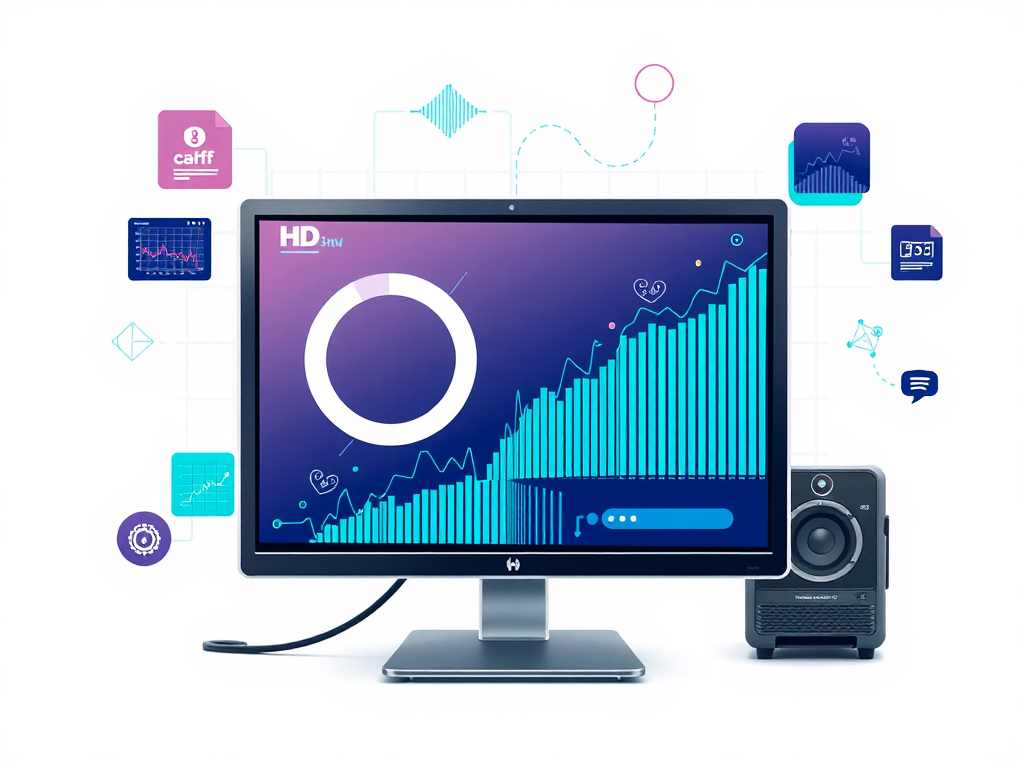Artificial intelligence is revolutionizing how businesses identify and engage with qualified prospects. According to HubSpot’s 2024 State of Marketing report, companies using AI for lead generation see a 37% increase in conversion rates compared to traditional methods. But how exactly can AI transform your lead generation process from manual guesswork into a data-driven powerhouse?
How Smart Lead Discovery Solutions Transform Your Sales Pipeline
Traditional prospecting methods often feel like searching for a needle in a haystack. Sales teams spend countless hours manually researching potential customers, only to discover that many leads aren’t qualified or ready to buy. Smart lead discovery changes this entire equation by leveraging artificial intelligence to identify high-quality prospects with surgical precision. With solutions like https://www.marblism.com/ai-employees/stan, sales teams can now automate prospect research and personalized outreach at scale.
Also read : Uk companies propel high-tech innovations: discover the cutting-edge solutions transforming industries
Modern AI-powered systems analyze vast datasets across multiple touchpoints—from company websites and social media activity to funding announcements and hiring patterns. This comprehensive approach reveals buying signals that human researchers might miss entirely. For instance, when a company posts job openings for specific roles or announces expansion plans, AI algorithms can instantly flag them as potential prospects for relevant solutions.
The transformation becomes evident in the numbers. Sales teams using intelligent lead discovery report 300% higher conversion rates compared to traditional cold outreach methods. Instead of casting wide nets and hoping for the best, these solutions deliver pre-qualified prospects who demonstrate genuine interest indicators or match ideal customer profiles with remarkable accuracy.
Also to read : Exploring the core obstacles confronting high-tech startups in the uk
Beyond identification, smart discovery platforms provide detailed prospect insights that enable personalized outreach at scale. Sales representatives receive comprehensive dossiers including recent company developments, key decision-makers, and optimal contact timing recommendations, turning every interaction into a strategic conversation rather than a generic pitch.
Essential Features Every AI-Powered Prospect Tool Should Have
Choosing the right AI prospect tool can transform your sales efficiency, but not all platforms are created equal. The best solutions combine intelligent automation with practical functionality to deliver measurable results for your outreach campaigns.
Here are the core features that separate industry-leading AI prospect tools from basic alternatives:
- Predictive scoring algorithms that analyze multiple data points to rank prospects by conversion likelihood, helping you prioritize high-value opportunities and allocate resources more effectively
- Seamless CRM integration that syncs prospect data, tracks interactions, and maintains a unified view of your sales pipeline without manual data entry or workflow disruptions
- Behavioral analysis capabilities that monitor prospect engagement patterns, website visits, and email interactions to identify buying signals and optimal outreach timing
- Automated personalization engines that craft tailored messages based on prospect profiles, industry trends, and previous successful campaigns to improve response rates
- Advanced reporting dashboards that provide actionable insights into campaign performance, prospect quality metrics, and ROI analysis to optimize your sales strategy
These features work together to create a comprehensive prospecting ecosystem that reduces manual effort while improving conversion rates and sales velocity.
Why Machine Learning Outperforms Traditional Outreach Methods
Traditional outreach methods rely heavily on manual research and generic messaging, resulting in conversion rates as low as 1-3% across most industries. Sales teams spend countless hours building prospect lists, crafting personalized messages, and managing follow-up sequences without the benefit of data-driven insights.
Machine learning transforms this approach by analyzing vast datasets to identify high-intent prospects with precision rates exceeding 85%. Advanced algorithms can process thousands of data points – from company growth patterns to behavioral signals – in seconds, while human researchers would need weeks to achieve similar accuracy.
Case studies consistently demonstrate the superiority of automated systems. A recent implementation at a SaaS company showed machine learning-powered outreach achieving 12% response rates compared to 3% from traditional methods. The AI system identified prospects 4x faster while maintaining personalization quality that matched human-crafted messages.
The ROI difference becomes even more pronounced when considering opportunity costs. While traditional outreach requires significant manual labor, intelligent automation allows sales teams to focus on high-value activities like relationship building and deal closing, ultimately driving revenue growth that far exceeds the technology investment.
Getting Started: Implementation Strategy for Maximum Results
The key to successful AI lead generation implementation lies in strategic planning rather than rushed deployment. Start by conducting a thorough assessment of your current sales processes, identifying specific bottlenecks where automation can deliver immediate impact. Map out your existing tech stack to ensure seamless integration with new AI tools.
Team preparation plays a crucial role in adoption success. Designate AI champions within your sales organization who can guide colleagues through the transition and troubleshoot common issues. These internal advocates should receive comprehensive training on tool functionality, data interpretation, and optimization techniques before company-wide rollout.
Establish clear performance benchmarks from day one. Track metrics like lead quality scores, conversion rates by source, and time savings per representative. This data-driven approach allows you to fine-tune AI parameters and demonstrate tangible ROI to stakeholders. Remember that optimal results typically emerge after 30-60 days of consistent usage and refinement.
Consider starting with a pilot program targeting your most predictable customer segments. This controlled approach minimizes risk while providing valuable insights for broader implementation across diverse market verticals.
Measuring Success: ROI and Performance Metrics That Matter
The most successful AI lead generation implementations share one common trait: they’re measured meticulously. Without proper tracking, even the most sophisticated AI tools become expensive experiments rather than profitable investments.
Start with lead qualification rates as your primary indicator. AI-powered systems should dramatically improve the quality of prospects entering your pipeline. Track how many AI-generated leads convert to qualified opportunities compared to traditional methods. A well-tuned AI system typically increases qualification rates by 40-60%.
Your cost per lead metrics reveal the true efficiency gains. Calculate the total investment in AI tools, training, and implementation against the volume of qualified leads generated. Most businesses see cost reductions of 30-50% within six months of proper AI deployment.
Monitor your sales cycle acceleration through time-to-close measurements. AI’s ability to identify buyer intent signals and optimal outreach timing should compress your sales cycles significantly. Track the average days from first contact to closed deal across AI-sourced versus traditionally sourced leads.
Finally, implement continuous optimization through A/B testing of AI-generated messaging, timing, and targeting parameters. The most successful teams review these metrics weekly and adjust their AI configurations monthly to maintain peak performance.
Questions Fréquentes sur la Prospection Intelligente

How does AI help find better sales leads than traditional methods?
L’IA analyse des millions de données en temps réel, identifiant des prospects qualifiés selon des critères précis. Elle détecte les signaux d’achat et comportements d’entreprises impossibles à repérer manuellement.
What are the best AI-powered lead generation tools for small businesses?
Les outils comme Apollo, Clay ou Outreach offrent des fonctionnalités adaptées aux PME. Ils automatisent la recherche de prospects et personnalisent les campagnes d’approche selon votre budget.
Can artificial intelligence really improve my outreach conversion rates?
Absolument. L’IA personnalise chaque message selon le profil du prospect, optimise les heures d’envoi et identifie les moments opportuns pour contacter. Les taux de réponse augmentent de 15-30%.
How much does AI lead generation software typically cost?
Les tarifs varient de 50€/mois pour les solutions basiques à 500€/mois pour les plateformes avancées. Le retour sur investissement se mesure généralement dès le premier mois d’utilisation.
What data sources do AI lead finder tools use to identify prospects?
Les outils exploitent LinkedIn, bases de données d’entreprises, réseaux sociaux, sites web et signaux d’intent. Ils croisent ces informations pour créer des profils de prospects ultra-précis.





